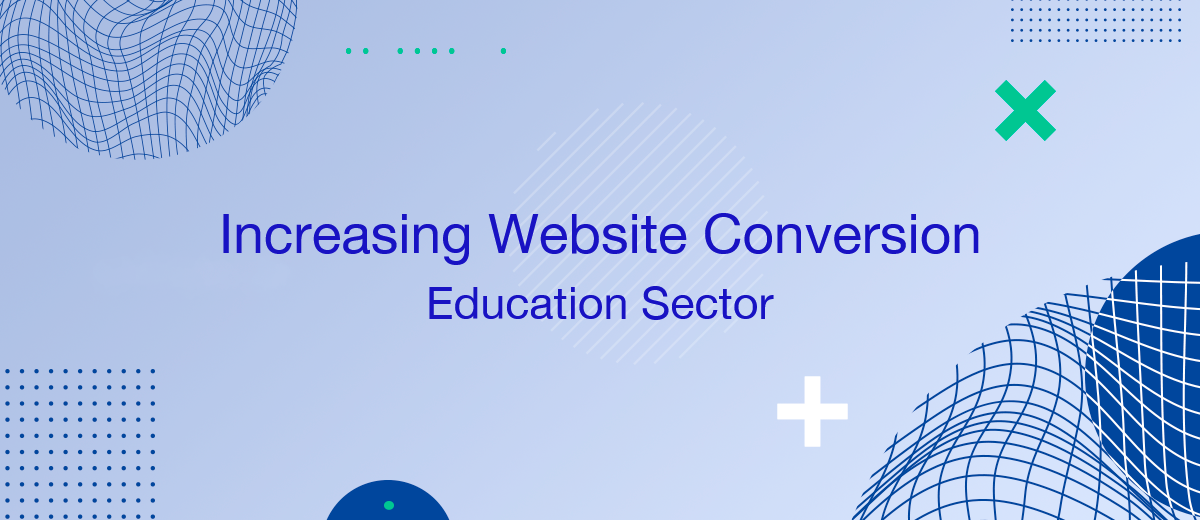The digital marketing realm is continuously transforming, posing a significant challenge for the education sector in terms of enticing and converting website visitors into potential students. Given the plethora of choices at students' disposal, it's critical for educational institutions to refine their web presence to boost conversion rates effectively. This discussion explores the strategies for improving website conversions within the education industry, emphasizing the enticing advantages of pursuing a college education.
Understanding the Landscape of Website Conversion in Education

The Digital Age and the Education Sector
The advent of the digital age has revolutionized the way educational institutions operate and interact with their prospective and current students. In this era where information is readily accessible with a few clicks, a college or university's website does not merely serve as a digital brochure but as a dynamic interface that can shape the decision-making process of its visitors. With the majority of high school graduates being digital natives, their first interaction with a higher education institution is likely to be through its online presence. This initial digital encounter can significantly influence their perception of the institution's values, educational quality, and community.
Given this scenario, the importance of a well-designed, informative, and user-friendly website cannot be overstated. It stands as a virtual gateway, through which prospective students and their families can explore academic offerings, campus life, and the tangible and intangible benefits of attending the college. Hence, optimizing the website to serve as an effective recruitment tool is paramount. This involves not just an aesthetically pleasing layout, but also strategic content placement that guides visitors naturally towards application and enrollment processes.
The Significance of Website Conversion
In the context of the education sector, website conversion is a multifaceted process that extends well beyond the mere attraction of casual visitors to an institution’s digital domain. It encapsulates the strategic crafting of an online environment that is not only engaging and aesthetically appealing but also rich in information and intuitive to navigate. The primary objective is to elicit a specific response from prospective students and their influencers, prompting them to move through the conversion funnel which may include actions like submitting an application, signing up for a newsletter, or requesting additional information.
The significance of website conversion lies in its ability to transform passive interest into active engagement. In an era where educational institutions fiercely compete for attention, having a high traffic volume to a website is not sufficient if that traffic does not lead to meaningful interactions. Therefore, every aspect of a website's design and content must be aligned with conversion goals, and tailored to the needs and preferences of the target audience. This involves understanding the journey of a prospective student from initial inquiry through to enrollment, and ensuring that at each stage, the website provides relevant, compelling content and clear pathways to the next step.
Key Elements of Increasing Website Conversion
Boosting website conversion starts with a welcoming digital doorstep. It's about crafting a space that's as easy to navigate as it is engaging, ensuring every potential student's visit is both enjoyable and informative.
User-Friendly Website Design
A seamless and user-friendly website design is foundational to improving conversion rates. The navigation should be intuitive, information easily accessible, and the overall design visually appealing. Potential students should feel welcomed and inspired to explore further.
Compelling Content
The content on an educational website plays a pivotal role in converting visitors. High-quality, relevant, and engaging content, including blog posts, articles, and multimedia, can showcase the unique value proposition of a college education, address common concerns, and demonstrate the institution's commitment to academic excellence.
Responsive and Mobile-Friendly Design
With the increasing use of mobile devices, having a responsive and mobile-friendly website is paramount. Prospective students should have a seamless experience, regardless of the device they use to access the website. This enhances accessibility and contributes to higher conversion rates.
Benefits of College Education

Exploring the myriad advantages of higher education reveals a landscape rich with opportunity and growth. At the heart of a college journey lies the pursuit of academic advancement and knowledge acquisition, offering students a profound platform to hone their intellect and prepare for a world of possibilities.
Academic Advancement and Knowledge Acquisition
One of the primary benefits of college education is the opportunity for academic advancement and knowledge acquisition. Colleges provide a structured environment where students can delve into their chosen fields of study, gain expertise, and develop critical thinking skills.
Career Opportunities and Professional Development
A college education opens doors to a myriad of career opportunities. Graduates often find themselves equipped with the skills and qualifications necessary to thrive in their chosen professions. Many employers value the depth of knowledge and dedication demonstrated by college-educated individuals.
Personal Growth and Development
Beyond academics, college fosters personal growth and development. Students are exposed to diverse perspectives, cultures, and experiences, helping them develop a broader worldview and enhancing their interpersonal skills. The college environment encourages independence, resilience, and adaptability.
Networking and Social Connections
Colleges provide a unique social setting where students can build lifelong connections and networks. The relationships formed during college often extend into professional life, offering valuable connections in various industries.
Implementing Strategies for Increased Website Conversion
Turning a website into a conversion powerhouse requires a blend of insight and action. By implementing strategies grounded in data and analytics, institutions can decode the digital language of user behavior. This enables a tailored approach to content and design, transforming insights into meaningful experiences that resonate with visitors.
Utilizing Data and Analytics
Harnessing the power of data and analytics is crucial for understanding user behavior on a website. Institutions can leverage insights to identify areas for improvement, tailor content to meet user needs, and implement data-driven strategies to enhance the overall user experience.
Implementing Call-to-Action (CTA) Strategies
Strategically placed and compelling calls-to-action guide visitors through the conversion funnel. Whether it's prompting them to submit an application, schedule a campus visit, or download informative resources, well-crafted CTAs can significantly impact conversion rates.
Personalization and Targeted Marketing
Personalizing the online experience is not just a modern trend; it's a powerful tool in amplifying website conversion rates. Educational institutions can harness the power of data analytics to tailor their website's user experience to individual visitors. Here's how a personalized approach can transform a potential student's journey:
- Data-Driven Insights: By analyzing user data, institutions can identify patterns and preferences among their website visitors. This could include geographical location, the type of content consumed, time spent on pages, and interaction with various elements of the site.
- Customized User Experiences: With these insights, the website can dynamically present the most relevant content to each visitor. For instance, a prospective art student from New York might see highlighted art courses, success stories from alumni in the same field, and upcoming local events.
- Targeted Marketing Strategies: Beyond the website, these data insights allow for targeted email marketing campaigns, personalized advertisements, and social media outreach. Each touchpoint is an opportunity to present a message that resonates with the potential student's interests and needs.
- Dynamic Content Delivery: Implementing tools like content management systems (CMS) that support dynamic content delivery can be pivotal. They allow the website to automatically update and present content based on the visitor's behavior and interaction with the site.
- Continuous Learning and Adaptation: Personalization is an ongoing process. Continuous A/B testing and user feedback loops ensure that the strategies remain effective and evolve with changing user behaviors and preferences.
Conclusion
In summary, enhancing conversion metrics for educational websites is a complex task demanding a well-planned strategy. Grasping the distinct advantages offered by higher education and executing potent online marketing tactics can help schools establish a strong digital identity that appeals to potential enrollees, thereby improving conversions. Given the intense rivalry for student enrollment, adopting these foundational strategies is crucial for higher education institutions aiming to achieve long-term growth and maintain student numbers in today's digital landscape. Incorporating targeted marketing campaigns is essential to differentiate and elevate an institution's appeal in this competitive sector.
Would you like your employees to receive real-time data on new Facebook leads, and automatically send a welcome email or SMS to users who have responded to your social media ad? All this and more can be implemented using the SaveMyLeads system. Connect the necessary services to your Facebook advertising account and automate data transfer and routine work. Let your employees focus on what really matters, rather than wasting time manually transferring data or sending out template emails.
